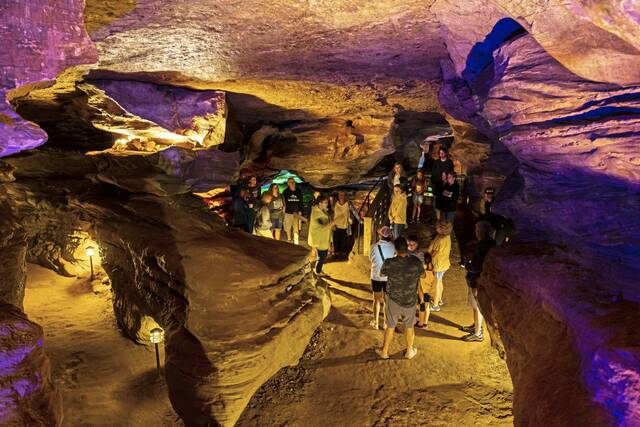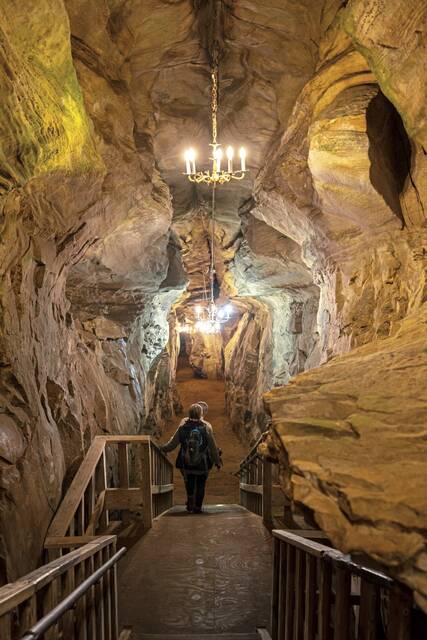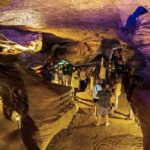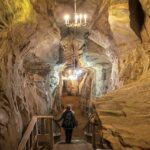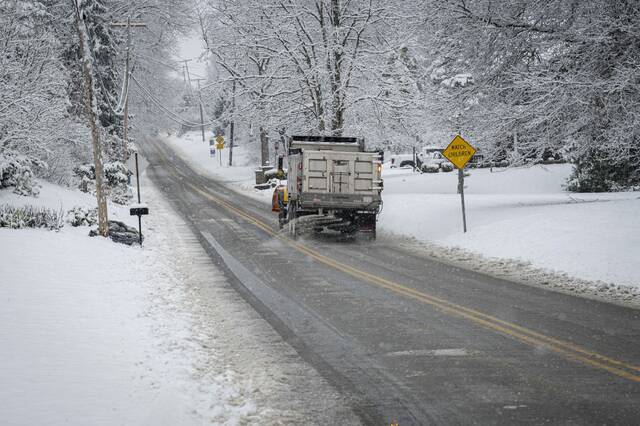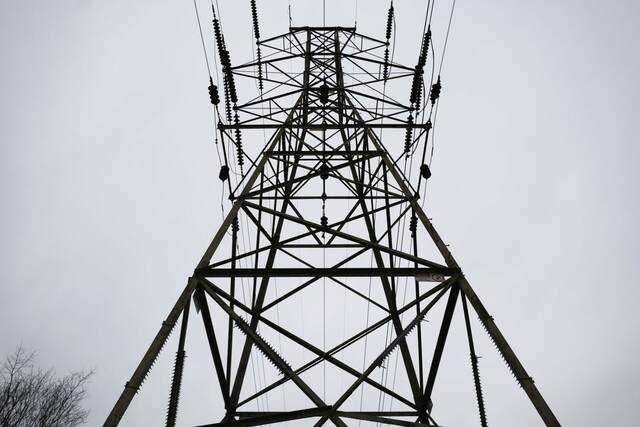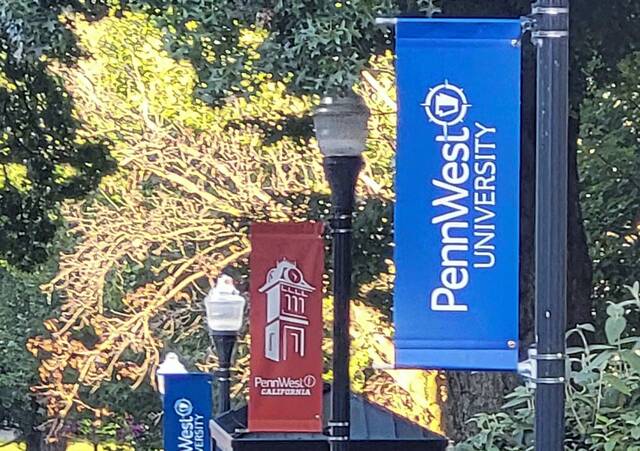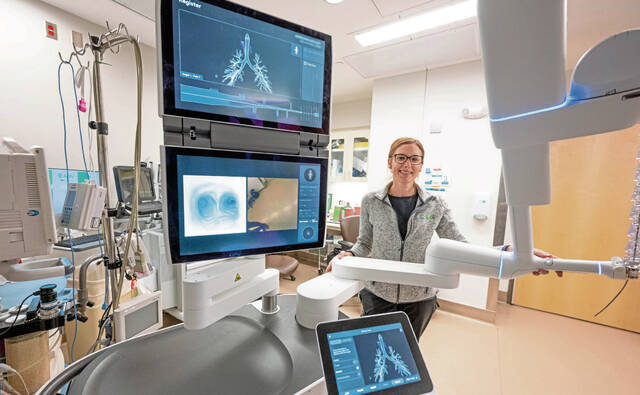David Cale, owner of Laurel Caverns, remembers living in a tent on the property in 1962 while he helped his grandfather develop the site for public tours.
Just before the attraction in Farmington, Fayette County, opened in July 1964, Cale made a jagged wooden sign to mimic the signs he had seen at state parks in West Virginia
“I had a vision for the cave as a state park from the very beginning,” Cale said.
More than 60 years later, Gov. Josh Shapiro is proposing Laurel Caverns be tapped to become Pennsylvania’s first underground state park.
The House tourism committee and members of the Department of Conservation and Natural Resources toured the large natural calcareous sandstone caves this week. The 4-mile labyrinth also is the largest natural bat hibernaculum in the northeastern U.S.
The road ahead
Mike Mumau, DCNR division manager for Laurel Highlands area state parks, said his group is focused on the protection and perpetuity of the caves and has been working hand in hand with Cale for the past few months.
“I think that there is a lot of work that goes into creation of a new state park,” Mumau said.
Although still early in the process, Mumau is looking at how Laurel Caverns can become a state park from multiple angles.
The first is to look at the infrastructure of the caves, the visitors center and the functional systems — including water, sewage, electrical and mechanical — to ensure it meets basic codes and requirements that would be expected as a state park.
DCNR also is looking at Laurel Caverns from an operational standpoint, which includes staffing and ensuring the guided tours can continue.
“We’ve been doing our due diligence and working cooperatively there to try and bring the systems where we need them,” Mumau said.
State Sen. Pat Stefano, R-Bullskin, said DCNR could breathe new life into the site.
“It’s a wonderful feature of Fayette County, and having the DCNR take that over will continue bringing this wonderful amenity to people,” he said.
Storied history
According to Laurel Caverns, Native Americans found the entrance to the caves hundreds of years ago and, over the years, many arrowheads have been found there. No one is sure when the first non-Native Americans entered the caves, but the date was likely in the 1760s. By the summer of 1776, there was a quarry operating at the edge of the limestone bed.
The first official site owner was Richard Freeman, who acquired the 400 acres from the state in 1794.
The area changed hands several times. In the early 1900s, Uniontown resident Roy Cale, district manager of A&P Food Stores in Southwestern Pennsylvania, heard the area was up for sale and alerted his cousin, Norman Cale, and the two formed a partnership. They purchased the property above Laurel Caverns in 1927. By 1952, Norman Cale, David Cale’s grandfather, was the sole owner.
In its early days, visitors came to see the caves whenever they liked, and the area was sometimes trashed, with garbage and broken glass on the floor and graffiti on the walls, prompting Cale’s grandfather to develop the caves for guided tours.
Norman Cale learned household wiring from a civil engineer and added lighting. A local coal mining company broke up some of the rocks inside to form paths. Norman Cale also learned about the geology of the caves and discovered previously unexplored passages, his grandson said.
On July 1, 1964, the caves officially opened for tours. Although there are more than 4 miles of caves, only the top portion was developed and is featured in tours. There is an optional tour with a steeper climb.
David Cale would donate the property to the state should it become an official park.
“We got to look after this place,” David Cale said. “I’ve spent my whole life here protecting it.”


